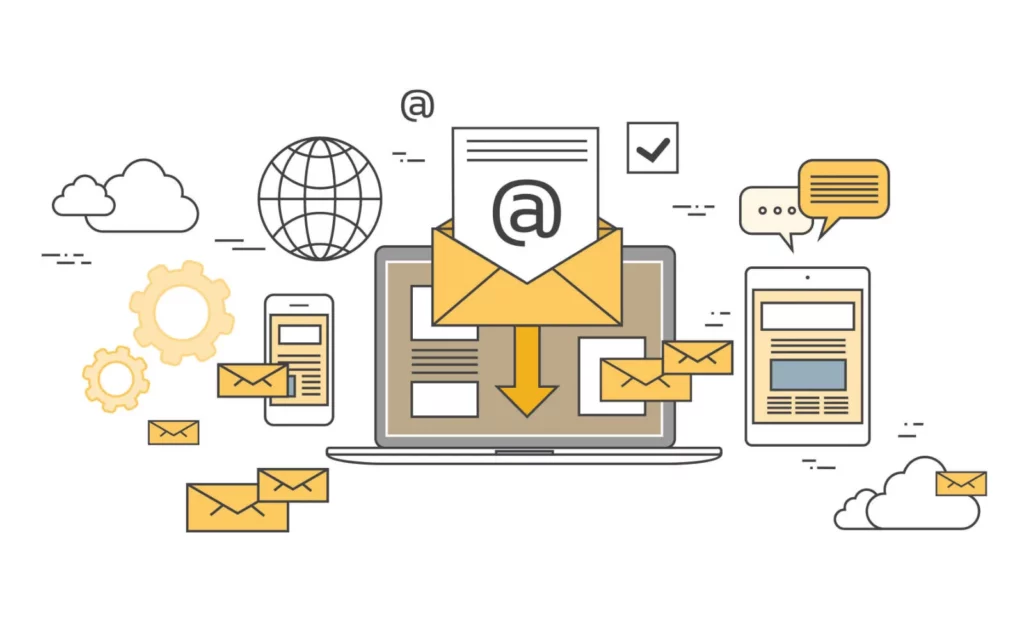
Email Marketing Best Practices for Higher Conversions
By Udit Agarwal

Email marketing continues to be a potent tool for businesses looking to engage their audience and drive conversions. However, achieving success in email marketing is not merely about sending out messages; it’s about understanding and implementing best practices that can lead to higher conversions. This comprehensive guide will explore the email marketing landscape and provide actionable best practices to maximize your marketing efforts.
Segmentation and Personalization
- Segment Your Audience: A one-size-fits-all approach rarely works in email marketing. Segment your email list based on demographics, behavior, and preferences. It enables you to send tailored messages to specific groups.
- Personalize Your Emails: Personalization goes beyond adding the recipient’s name. Use data to customize content, product recommendations, and offers, making each email relevant to the individual.
Effective Subject Lines and Preheaders
- Craft Engaging Subject Lines: Your subject line is the first thing recipients see. Make it compelling, concise, and relevant to the email’s content. Use action-oriented language and create a sense of urgency if applicable.
- Optimize Preheaders: The preheader provides a preview of the email’s content. Use this space wisely to provide a teaser or a summary of what the recipient can expect in the email.
Compelling Email Content
- Content Relevance: Ensure that the content of your email is highly relevant to the recipient’s needs and interests. Solve their problems, provide valuable insights, and engage their curiosity.
- Mobile Optimization: Given the prevalence of mobile devices, design your emails to be mobile-responsive. Ensure they render well and are easily readable on various screen sizes.
Compelling Call to Action (CTA)
- Clear and Compelling CTA: Every email should have a clear and compelling call to action. Use action words and make the CTA button stand out visually. Test different CTAs to see what resonates with your audience.
- Limited Choices: Avoid overwhelming your recipients with multiple CTAs. Focus on a primary action you want them to take, whether purchasing, signing up for a webinar, or downloading an e-book.
A/B Testing
A/B Test Email Elements: A/B testing allows you to experiment with elements such as subject lines, sender names, email copy, and CTAs. Test one component at a time to understand what resonates best with your audience.
Optimized Send Times
- Schedule Emails Wisely: The timing of your emails can significantly impact open and click-through rates. Research your audience’s behavior and time zone to determine the best times to send emails.
- Testing Send Times: Conduct A/B tests to determine when your audience is most responsive. Keep in mind that optimal send times can vary across industries and audiences.
Consistent Branding
- Consistent Branding: Maintain a consistent look and feel in your emails that aligns with your brand. Use recognizable colors, logos, and fonts to establish trust and recognition.
- Email Signature: Include a professional and informative email signature with your name, title, and contact information. It adds credibility to your emails.
Permission-Based Lists
- Permission-Based Lists: Only email individuals with explicit consent to receive your messages. It builds a high-quality list of engaged recipients.
- Opt-Out Process: Make it easy for recipients to unsubscribe from your emails. Ensure that your opt-out process is straightforward and adheres to email marketing regulations.

Monitoring and Analytics
- Monitor Key Metrics: Regularly track email metrics like open rates, click-through rates, conversion rates, and unsubscribe rates. Use this data to refine your email strategy.
- Conversion Tracking: Implement conversion tracking to measure the effectiveness of your email campaigns in driving desired actions, such as purchases or sign-ups.
Automation and Personalized Journeys
- Automation Sequences: Implement email automation to deliver a series of emails based on user behavior. Create welcome sequences, abandoned cart reminders, and nurturing campaigns.
- Behavior-Based Triggers: Set up behavior-based triggers that automatically send emails in response to specific actions taken by recipients, like visiting a particular product page.
Regulatory Compliance
- CAN-SPAM Compliance: Ensure that your email campaigns comply with the Act by including a physical mailing address, offering an opt-out mechanism, and not using deceptive subject lines or headers.
- General Data Protection Regulation (GDPR): If you operate in regions covered by GDPR, be aware of the regulations regarding collecting and processing personal data. Obtain proper consent for data usage.
Testing and Optimization
- Regular Testing: Continuously test and optimize your email campaigns. Experiment with different elements to improve open and click-through rates.
- Data-Driven Decisions: Base your email marketing decisions on data and analytics. Use insights to refine your content, segmentation, and sending strategies.
Engagement and Retention
- Engagement Strategies: Develop strategies to re-engage inactive subscribers. Send targeted emails to encourage them to interact with your brand again.
- Customer Feedback: Encourage customers to provide feedback through surveys or reviews. Use this feedback to improve your products or services and tailor your email content.
Compliance with Privacy Regulations
- California Consumer Privacy Act (CCPA): Comply with the CCPA’s privacy regulations, especially if you have customers in California. Ensure transparent data collection and user rights.
- Cross-Border Data Transfer: If your email list includes recipients from various countries, be aware of cross-border data transfer regulations. Comply with the laws that govern data transfer outside the recipient’s country.
Conclusion
Successful email marketing relies on personalization, compelling content, optimized design, and adherence to legal regulations. By implementing these best practices, you can maximize your email marketing’s potential for higher conversions, improved engagement, and a more significant return on investment. Stay current with industry trends and continuously test and adapt your strategies to ensure your email campaigns remain effective. Remember that effective email marketing is an ongoing process that evolves with your audience’s changing preferences and behaviors.